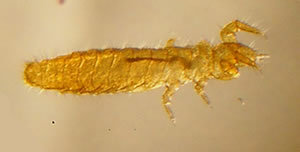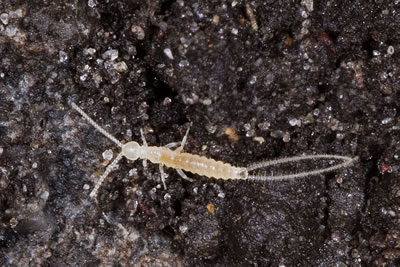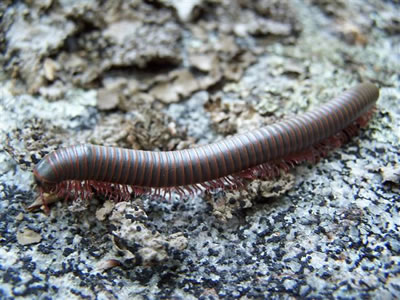Leaf Litter Animals
Facts about creatures
- Home
- Animal Classification
- Animal Habitats
- Amphibians
- Arthropods
- Bats
- Birds
- Carnivorans
- Cetaceans
- Chordates
- Crustaceans
- Dinosaurs
- Diprotodonts
- Elephants
- Fish
- Golden Mole
- Insects
- Lagomorphs
- Mammals
- Mammal Teeth
- Marsupial Mole
- Metamorphosis
- Mollusks
- Primates
- Reptiles
- Rodents
- Ruminants
- Soricomorphans
- Tenrec
- Tetrapods
- Vertebrates
Leaf Litter Animals
Leaf litter, which consists of the dead leaves and other debris that fall to the floor of a forest, is a home for many living things.
The top layer of litter, which makes up a few centimeters, is known as the litter layer or litter horizon. It contains the leaves that have fallen most recently. Most of these can still be easily identified.
Below the litter layer is a layer known as the fermenting layer or fermenting horizon.
The leaves here are more compact. Some of them are recognizable, but many are already rotting.
The fermenting horizon may be several centimeters thick.
The third, lowest layer (or horizon) is known as the humus.
It is dark brown or black and contains remains of plants and animals that have completely rotted.
Leaf litter contains millions of microscopic organisms, including bacteria, fungi and single-celled plants.
Larger animals can be found in the leaf litter as well.
Wolf spiders in leaf litter are carnivores that run after their prey. They do not make webs.
They are often found in the floors of drier forests.
Some small spiders that spin webs also live in leaf litter.
Some species of harvestmen, often known as harvest spiders or daddy longlegs, have adapted to the leaf litter habitat by evolving shorter legs. They will devour any animals they can catch. Harvestmen also eat animal droppings and the bodies of animals that have died recently.
Large quantities of mites can often be found in leaf litter. They live in all the layers of litter, feeding on debris and beginning the decay process.

Springtails live in the upper part of the leaf litter where they eat plant material that has fallen to the floor of the forest.
They are rarely more than 2/5 inch long.
They have grey or yellowish hairy bodies, long antennae, and a forked tail that is usually held beneath the abdomen by a small hook. When the tail is released, it moves downwards and backwards suddenly. This causes the springtail to spring forward.
Springtails are hexapods, a group of arthropods which includes insects.
Arthropods also include spiders, scorpions and crustaceans.
Protura are another type of hexapod that lives in leaf litter
These creatures are pale, small (between 1 and 1.5 millimeters long) and do not have antennae.
They use their forelegs to provide them with sensory information, holding them forward and upward.


Diplura, also known as two-pronged bristletails, are also hexapods.
They are small, normally between 2 and 8 millimeters long.
Diplura are white. They have long antennae but do not have eyes.
Thysanura, or three-pronged bristletails, are insects with scaly bodies, long antennae and compound eyes.
Thysanura include silverfish and firebrats, which live in human homes.
Springtails, diplura and the thysanura that live in leaf litter are detritivores, or saprophytes. This means that they feed on the remains of dead organisms (detritus).
Beetles also live in leaf litter.
Pine weevils (a kind of beetle) and some ladybugs hibernate in the litter.
Other beetles, including ground beetles and rove beetles live in leaf litter all year round.
Some beetles are carnivorous. Others eat roots and fruits, or plant detritus.
The violet ground beetle is a carnivorous beetle that is about one inch long. It can be found in gardens as well as on the forest floor.
Flies and fly larvae often live in leaf litter. Most live in the damper parts of the litter, where they are preyed upon by beetles and centipedes.
Predators such as centipedes and beetles often eat them.
Woodlice eat leaf litter, seedlings, dung and fungi.


Millipedes eat only vegetable matter, both living and dead.
Both woodlice and millipedes help to decompose plant detritus.
While insects have a waxy layer to protect their skin form moisture loss, woodlice, millipedes and centipedes do not. Therefore, they are restricted to moist places. They come out at night when the air is damp.
© 2008 – 2023 animalfacts.net
Privacy Policy